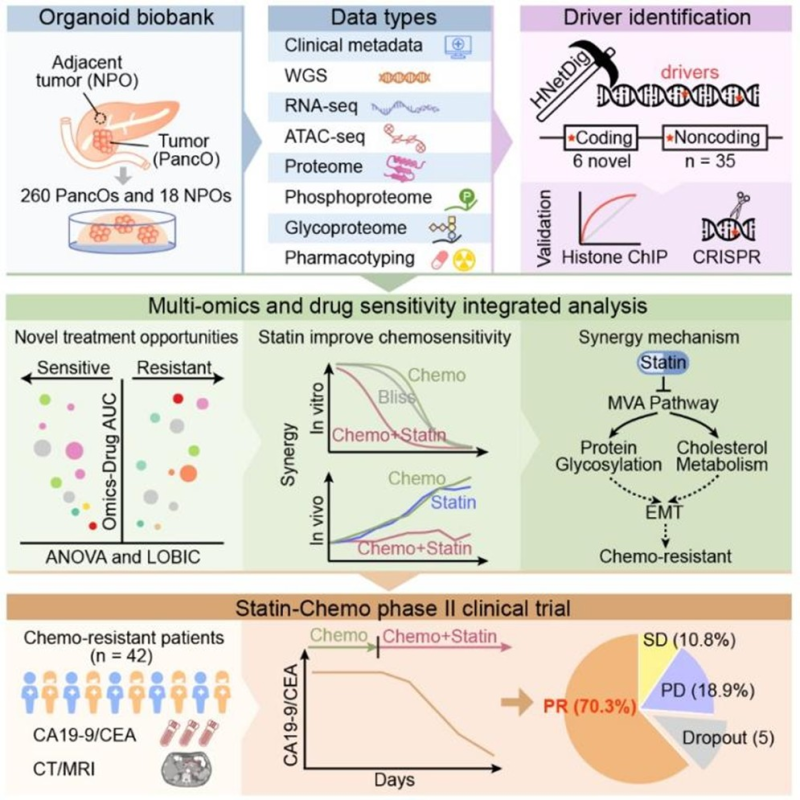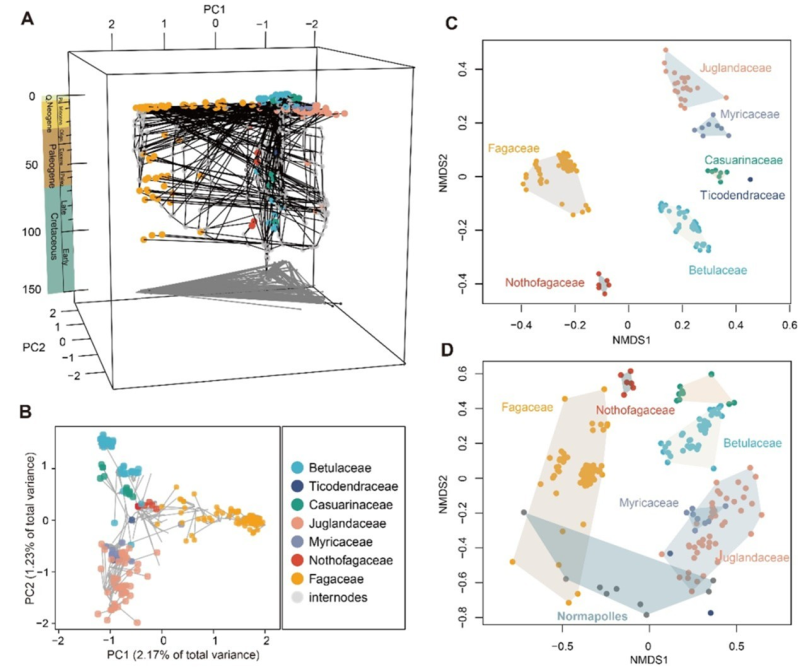Weekly Advanced Technologies〔86〕

Weekly Advanced Technologies〔86〕丨Nano-Scale 'Key' Unlocks Plant Immunity: Novel Soybean Defense Mechanism Revealed Through GmPEP914-Receptor Discovery; Pancreatic Cancer Treatment Breakthrough: Atorvastatin Tablet Enhances Chemotherapy Efficacy
Hidden inside plants are smart self-defense tools—like a tiny soybean peptide that supercharges disease resistance, paving the way for greener farming. On another front, scientists in China cracked pancreatic cancer’s stubborn drug resistance using lab-grown "mini-tumors," even spotting common heart drugs that boost chemo’s power.
Based on the weekly diary of technology provided by the daily list of the NCSTI online service platform, we launch the column "Weekly Advanced Technologies" at the hotlist of sci-tech innovation. Today, let's check out No.86.
1. Nature Plants丨Nano-Scale 'Key' Unlocks Plant Immunity: Novel Soybean Defense Mechanism Revealed Through GmPEP914-Receptor Discovery

Identification of immune elicitor in soybean via high-throughput ligand-receptor pairing induces broad-spectrum resistance
Plant genomes encode a vast repertoire of secretory small peptides, which serve as critical signaling molecules regulating both growth/development and immune defense. Among these, numerous peptides are recognized by cell membrane-localized receptors, particularly the leucine-rich repeat receptor kinase (LRR-RK) family, which plays a central role in perceiving external signals.
A collaborative study by LI Lei’s team from the Institute of Genetics and Developmental Biology, Chinese Academy of Sciences and TIAN Zhixi’s team from Yazhou Bay Laboratory systematically analyzed the pairing of secretory small peptides (SSPs) and their receptors in soybean (Glycine max), successfully identifying 63 functional peptide-receptor pairs. The research revealed that two immune-related peptides, GmPEP914 and GmPEP890, significantly activate soybean immune responses, effectively defending against multiple pathogen infections. This process depends on two leucine-rich repeat receptor kinases (LRR-RKs), GmP98R1 and GmP98R2.
AI-assisted structural modeling and biochemical validation confirmed that GmPEP914 and GmPEP890 directly bind to the GmP98R receptor with nanomolar-level affinity. Further analysis revealed that this PEP914-P98R signaling module is highly conserved in leguminous (Fabaceae) and cucurbit (Cucurbitaceae) plants, suggesting its evolutionary significance in plant defense systems.
This study has not only established a generalizable pipeline for peptide-receptor pair identification but has also uncovered the crucial role of GmPEP914 in soybean disease resistance. These peptides have demonstrated significant potential as core components of next-generation bio-pesticides—enabling the development of high-efficiency, low-residue plant protection products that are less likely to induce pathogen resistance. These findings have thereby contributed to advancing sustainable agricultural development.
2. Cell Stem Cell丨Pancreatic Cancer Treatment Breakthrough: Atorvastatin Tablet Enhances Chemotherapy Efficacy

Patient-Derived Organoid Library Reveals Synergistic Targets and Predictive Biomarkers for Statin Combination Treatments
Pancreatic ductal adenocarcinoma exhibits high malignancy, and although chemotherapy serves as the cornerstone treatment, most patients show poor response. To address the challenge of drug resistance, research teams led by GAO Dong from the Center for Excellence in Molecular Cell Science, ZHOU Hu from the Shanghai Institute of Materia Medica, and WANG Yong from the Academy of Mathematics and Systems Science – in collaboration with JIN Gang’s team from Shanghai Changhai Hospital and CHEN Luonan’s group from Shanghai Jiao Tong University – established the world’s largest organoid biobank. This repository comprises 239 pancreatic cancer samples, 21 other subtypes, and 18 normal tissues. The study further integrated multi-omics data (including genomics, transcriptomics, and proteomics) with drug sensitivity testing.
The research team developed a novel algorithm, HNetDig, which identified 6 novel coding driver mutations and 35 non-coding driver mutations, with their functions validated through gene editing. The study revealed that 79.6% of pancreatic cancer cases harbor potentially targetable genetic alterations, of which 38% demonstrated effectiveness in organoid validation. Furthermore, the team identified 2,794 molecular features associated with drug response and 322 features linked to radiotherapy sensitivity, thereby mapping a comprehensive panoramic drug sensitivity profile.
The study has revealed that elevated protein glycosylation and cholesterol metabolism are key hallmarks of chemoresistance. Statins can suppress this pathway to reverse drug resistance, with in vivo models demonstrating their synergistic tumor-suppressing efficacy when combined with chemotherapy.
Building on this, the team conducted a phase II trial: Atorvastatin was added to standard chemotherapy in 42 advanced patients. Follow-up showed tumor markers fell significantly in 26 cases, with response maintained for over 62 days on average and tumor reduction in the majority. This achievement has provided a breakthrough strategy for pancreatic cancer treatment, and a multicenter trial will be conducted for further validation.
3. Journal of Integrative Plant Biology丨Forest Foundation Engineers: Bimodal Evolution in Fagaceae Revealed

Temporal-Morphospace Evolution in Fagales: Diversification Dynamics and Disparity Across 7 Families
(A,B,D) Analyses incorporating extant and extinct taxa; (C) Extant-only reconstruction. Panel A reveals an early-burst trait evolution pattern in crown Fagales.
Angiosperms exhibit remarkable morphological diversity, yet the evolutionary trajectories of their traits across deep geological time remain poorly understood. A collaborative study by teams led by YI Tingshuang and LI Dezhu at the Kunming Institute of Botany, Chinese Academy of Sciences, together with Stephen A. Smith’s group at the University of Michigan, investigated Fagales (including oaks, chestnuts, and allies) by integrating genomic, fossil, and phenotypic datasets. Their work unveils fundamental patterns underlying trait evolution in this ecologically and economically critical plant order.
The research team newly sequenced transcriptomes from 149 species and integrated trait data for 232 taxa (including 52 fossil species), constructing the most comprehensive Fagales phylogeny to date. Results indicate a Late Cretaceous origin (~108.5 MYA) for Fagales, with extant families beginning diversification during the Cretaceous. Genomic analyses revealed: (1) a whole-genome duplication event in Juglandaceae (walnut family), and (2) 12 major gene duplication peaks across the order.
Scientists found that oak and walnut relatives evolved most of their modern shapes surprisingly early—right after dinosaurs went extinct. While new traits (like complex leaves) emerged alongside genetic 'copying errors', these changes didn't speed up species formation. This surprise disconnect shows evolution tinkers with forms and species numbers separately.
4. Energy & Environmental Science丨Beyond Oxygen Release: Unmasking the True Mechanism of Thermal Runaway in Nickel-Rich Batteries

Multiscale electro-chemo-thermo-mechanical coupling at Ni-rich cathode interface during thermal runaway
As the demand for high-energy-density batteries grows with the proliferation of electric vehicles, high-nickel lithium-ion batteries have emerged as the dominant technology due to their superior performance. However, their widespread application remains constrained by significant thermal runaway risks. The research team at the Qingdao Institute of Bioenergy and Bioprocess Technology, Chinese Academy of Sciences, has long been committed to developing safer battery technologies. Their earlier work successfully elucidated the critical role of anode gas generation in thermal runaway processes.
The research team focused on high-nickel cathode materials and investigated the thermal runaway behaviors of batteries with varying nickel contents after aging. Utilizing multi-scale characterization techniques, they found that the dominant thermal runaway mechanisms differ based on nickel content: In high-nickel batteries, thermal runaway is primarily driven by interfacial side reactions between the cathode and electrolyte, rather than the conventionally assumed lattice oxygen release. In medium- and low-nickel batteries, oxygen release remains the key trigger.
The study further reveals that during charge/discharge cycles, high-nickel cathodes develop microcracks due to anisotropic volume changes and H2-H3 phase transitions. These cracks allow electrolyte infiltration, triggering side reactions and gas generation. The resulting gas pressure propagates crack propagation, creating a self-accelerating vicious cycle of "cracking → infiltration → reaction → gas generation → further cracking", ultimately leading to cascading thermal runaway.
The study has, for the first time, established a quantitative correlation between microstructural evolution and macroscopic thermal runaway. It has proposed a "tailored strategy": For high-nickel batteries, the focus has shifted to interfacial stability enhancement (e.g., coatings, oxidation-resistant electrolytes). For medium/low-nickel batteries, efforts have prioritized bulk structural stabilization (e.g., gradient doping, single-crystallization). This work has overturned the traditional "bulk-first" dogma and has laid critical theoretical foundations for next-generation high-safety battery design.